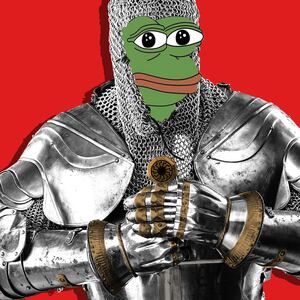After the horrific mass shooting in El Paso on Aug. 3, it can no longer be denied that white supremacy is a deadly force in American society. The Unite the Right rally in Charlottesville in August 2017 wasn’t a culmination of events but the starting point of a series of acts of racist and extremist violence, which historian Kathleen Belew warns are not isolated incidents but calls for more similar acts.
Belew points out that what unites many of these extreme acts of violence is the publishing of a manifesto before the crime is committed. In these manifestos, the perpetrators explain the reasons for their actions based in a worldview created out of what historian Michael Livingston calls a weaponization of history. Livingston mentions one book in particular that is referenced over and over—namely Might Is Right or the Survival of the Fittest published by the pseudonymous Ragnar Redbeard in 1896.
In his book, Redbeard—thought to be a Briton called Arthur Desmond—claims that white Europeans are superior to all other races, women and children are the property of men, and violence is the key to establishing domination. The Scandinavian-sounding pseudonym is not a coincidence: the fetishizing of Vikings is central to the ideology of white supremacy.
But the white supremacists’ view of the Vikings is another example of their weaponization of history. In many ways, the Vikings were the antithesis of what the alt-right stands for.
First of all, “viking” is not something you are; it’s something you do. It’s a job description. The people who are lumped together under the umbrella term “Vikings” were the Danes, the Norse, and the Swedes of late Iron Age Scandinavia who made their living from farming and fishing. A select few of the men went “a-viking,” but we don’t know the exact reasons for why they went. What we do know is that these men could leave the family farm for extended periods of time without jeopardizing the survival of the family. In other words, the men who went a-viking were expendable.
Viking Age society was patriarchal just like ours, but in contrast to what the alt-right claims, men and women both had status. We know this because people traced their lineage either through their mother or their father, depending on which one had the higher social position. An example of this is the man Alrik who raised a runestone commemorating his father Spjut, who went raiding in the west. On the stone, Alrik introduces himself as the son of Sigrid, his mother. Another example is the runestone commemorating farmer Gulle’s five sons, who all died in different parts of the world. The runestone was commissioned by their niece, Torgärd. Runestones were expensive, so for Torgärd to commission a stone she needed to have the agency to act on her own behalf, as well as control over her own personal wealth.
In Viking Age Scandinavian society, certain tasks were strictly gender-coded. To simplify, we say that men did the work outdoors, and women the work indoors. These lines were rarely, if ever, crossed. A Viking Age farm couldn’t function without a man-woman couple to run it. This couple could be husband and wife, two siblings, or a parent and a grown child. Which leads to another misconception about the Vikings—that there were only men onboard the longships. The Scandinavian settlements, such as the ones in Newfoundland, Greenland, Iceland, and the British Isles, would never have come into existence without women’s participation.
The strict labor division between men and women co-existed with what seems to have been a gender that incorporated both the male and the female. Viking Age burials with female human remains buried with male-coded grave goods point in this direction, as do the myths about shield-maidens.
Evidence of fluid gender boundaries can also be found in Norse mythology. Magic and prophecy were gender-coded female, and the wise woman, or völva, was an important member of the community. But it is Odin who is the god of wisdom, magic, and prophecy. Meanwhile, Loki, the trickster, shape-shifted into a mare and gave birth to Odin’s eight-legged horse, Sleipnir.
The resurgence of Norse mythology in the form of Asatrú has attracted followers from the alt-right who follow a racist and misogynist version of it. In the information about Norse religious practices that have survived to our time, there is no support for this sort of interpretation. What’s more, the definitive text on Norse mythology is Snorri’s Edda written and compiled by 13th-century Icelandic historian and lawspeaker Snorri Sturluson. Snorri viewed Norse mythology through the lens of his Christian faith and his knowledge of The Iliad and The Odyssey. According to Snorri’s Edda, Odin brought his people out of Asia in search for a new place to live, and this is how the gods—the Æsir—and their home, Asgard, got their names.
Another issue with Asatrú is that it gives the impression that all Viking Age Scandinavians were pagans. When it comes to religion, the Viking Age was a transition period where people were pagans, Christians, or both. Thor hammers made towards the end of the Viking Age could be used as both a hammer and a cross.
In contrast to how the alt-right uses the Vikings for their purposes, Viking Age Scandinavians were raiders turned immigrants who became completely assimilated into their new societies. If it weren’t for the introduction of certain Scandinavian dietary practices, place names, and political customs, there is hardly any evidence left of their presence.
Also, they had close contacts with the Muslim world. Viking Age Scandinavia was part of a trade network that reached from the English Channel to the Persian Gulf and which brought goods, people, and impulses to the region from as far away as India. Tens of thousands of Arabic silver coins, minted in today’s Iraq, have been found in Sweden alone.
This exchange and interaction brings us to the final point. Viking Age Scandinavians were not tall, blonde, and blue-eyed. The idea of the Viking warrior as the finest specimen of manhood took hold in the late 19th century when racism and Nordicism developed into ideologies declaring Scandinavians to be the superior race. Analyses of human remains from the Viking Age have revealed a wide spectrum of hair color, eye color, and height. Once again, there are echoes in Norse mythology. There, Thor does not look like Chris Hemsworth, but is described as a short and stocky redhead with a full beard and covered in body hair.
Of course, Viking Age Scandinavians were what we today would call white, and they were fierce fighters. But their skin color comes from the fact that they lived in and around the Arctic. And their fighting abilities developed because they lived in a violent society defined by vendettas and power struggles. These things don’t make the Vikings superior to anyone else. It makes them typical for the time and place where they lived.







